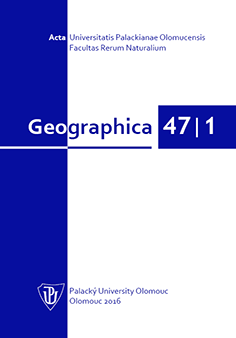Home >> Research >> Journal >> Geographica 47/2 >> Geographica 47/2
Geographica 47/2 (2016)
|
Acta Universitatis Palackianae Olomucensis |
 |
| Back to contents | Zpět na obsah |
Demographic and social transformations of eastern part of the Polish-Czech borderland
Monika Olberek-Żyła
Full text: ![]() PDF (3 MB)
PDF (3 MB)
Received: 4 April 2016
Accepted: 12 December 2016
Abstract
The aim of the article is to assess the diversity of population transformation trends in towns compared to their surrounding non-urban areas and to identify relationships occurring between them in the context of the demographic development of the Czech-Polish borderland. The area under study consists of the Moravian-Silesian Region on the Czech side and of the southern part of the Silesian Voivodeship on the Polish side. The components of population growth in the years 1995–2013 were examined. Statistical material was obtained from statistical offices in Poland and in the Czech Republic. Two research methods were applied in order to understand the relationship between natural increase and natural loss and net migration. Firstly, the Webb method was used. Another applied method was the Długosz’s typographs method, on the basis of which an attempt was made to create typology of cities. The analysis revealed that the Czech and the Polish part of the borderland differ in development of population growth, as on the Polish side, there was an increase in population, whereas on the Czech side, population decreased. Some similarities were observed as well, such as the depopulation of towns and cities for the benefit of their surrounding rural areas.
Key words
the Polish-Czech borderland, demographic and social transformations, Długosz’s typograph, Webb typology
Last modified 04/09/17 | ↑ top